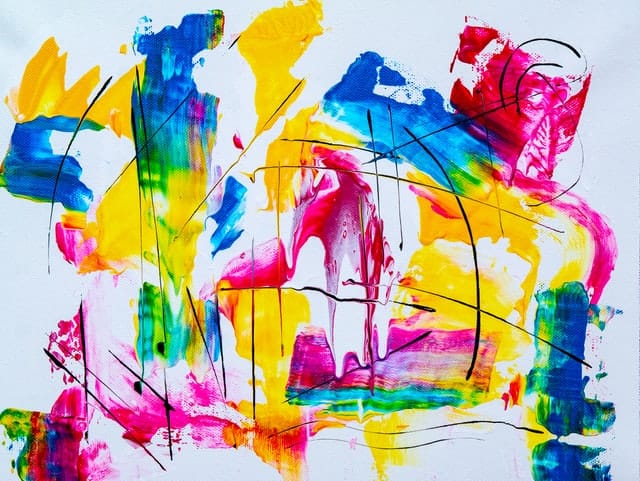Have you ever been to an art museum? What about the museum of one of the most emblematic and well-known pieces of art? Okay, maybe you haven’t been to the Museum of Modern Art but you’ve undoubtedly heard of the Starry Night. If nothing else, you might have heard of its immense, even priceless, value of over $100 million!
An amount of money most of us can only dream of! But if we knew nothing about the painting, the artist, or the fame behind it all, and we were asked to purchase it, how much would we actually be willing to pay? How much if money was no object?
Probably not very much. But is it also okay to attach value to paintings and other luxury goods simply on how much ‘use’ we can get out of them? A lot of art around us holds higher intrinsic and subjective value. One could argue that there might be ‘objectively’ good art, but I’m not sure anyone buys that.
Do the “economics” make sense?
The simple approach to the market of art, or at least fine art and any other luxury good, would be to determine its supply and demand. It’s crucial to note that both supply and demand are not based solely on their ‘use’. They can’t be treated like grains of rice or wheat, which have a very direct role in our lives.
The buyer wants status and power, not utility
It likely isn’t about the inherent value of the item itself. It’s about what the item says about the person owning it. Money, status, power … they are all very difficult things to show passively. If you want … if you NEED, to show people who you are, casually flashing a Rolex or inviting people to your home where they might see priceless art hanging on your walls, are a few ways.
So what drives demand?
- Authenticity: If I buy a ‘priceless’ piece of art, I need to know that it is by the original artist, and not a copy. People inherently prefer items they know hold the ‘aura of authenticity‘. This alone shows it’s not just about the perceived use from that item.
- Perceived Value: I’m not going to make a purchase for fine art if I dont think I can sell it to the next person for at least the same amount. If I was the only one whow perceived value from it, sure, maybe I could put a $ number to that art, but it likely wouldn’t be as high as $100 million. Even if I was an art collector.
The only reason it is given that value, is because enough people in the art community believe it to have that value. So basically speculation.
The seller wants to provide a good home
The seller isn’t just trying to make money by selling the product. By sellers, I’m not talking about the actual artist, but the market makers. They define the lens through which society will see their buyers and products. Why does it matter to me if a piece of art is valued at $103.4 million? The truth is, it really doesn’t. Not to them, because I’m not someone they care to have in the market.
Why do you think art is valued so highly? Who even came up with the price? Well, here are a few things the market makers will try and create.
- Scarcity: One of the most crucial pieces to the puzzle. Scarcity, couples with authenticity, to create sense of urgency that must be quelled. FOMO happens for the same reason. If you look at fine art, you’ll notice that most of the artists might have been long gone.
This naturally creates a feeling of exclusivity. Doesn’t matter if you enjoy the art, it has just become a collectors item. Same concept applies to a Stradivarius violin, a limited edition Pokemon card, or most recently NFTs. - Aura: Probably the most elusive of all. Apple has an aura, but anyone with the means to buy an iPhone, can go right ahead. But if you want to buy the art of a “master”, you probably can’t hope right in. There’s an exclusivity about it. To ensure the “aura” lives on, the art needs to be sold to a collector. Someone with status, so that it’s not a one way gain. It’s not the just the buyer benefitting from the potential tax-breaks from the art. The art benefits by attaching itself to those within the art community.
Essentially, the art can’t just go anywhere, it has to go to a good home. On top of that list are usually museums like MoMA and The Met. You could place a literal banana attached to the wall , and depending on where that wall was, it’s “value” would skyrocket because of the aura.

So … does this mean fine art has no value?
Anything with a market i.e. demand and supply could have a “price-tag” associated with it. It doesn’t matter if the demand is created because of manipulations by the suppliers. It doesn’t even matter that not everyone is willing to buy the art.
The niche market is available. Millions and billions of $$ flow from one party to the other, all within a highly concentrated set of galleries, museums, individuals, etc. To the layperson, it might not hold the same value at all, but then again, we probably wouldn’t even have the opportunity to buy it even if we could.
So yes, the value is completely arbitrary.
Of course, there are instances when the perceived value is actually incorrect. A viola, thought to be valued at $45 million, failed to attract any bidders. Oh, how the mighty have fallen.
But then again, the status was propped up on sticks of strategic marketing.
One can only imagine if everyone in the fine art community suddenly stopped participating. Sure, the art itself would probably have value, but maybe then it would reflect the actual subjective happiness the highest bidder would be receiving. But it would be quite troublesome for the dealers and auctioneers. Imagine if the Mona Lisa was up for grabs, and no one bid anything more than a few thousand dollars. Even if it doesn’t actually get sold, someone would have to update its value on Wikipedia.
So, in order to prevent that from ever happening, just never put it up on the market. Or put it up on the market with only select buyers. Those who definitely would bid in the millions. If you bring it out to sell to one person, and that person bids $1 billion, has its value just shot up?

